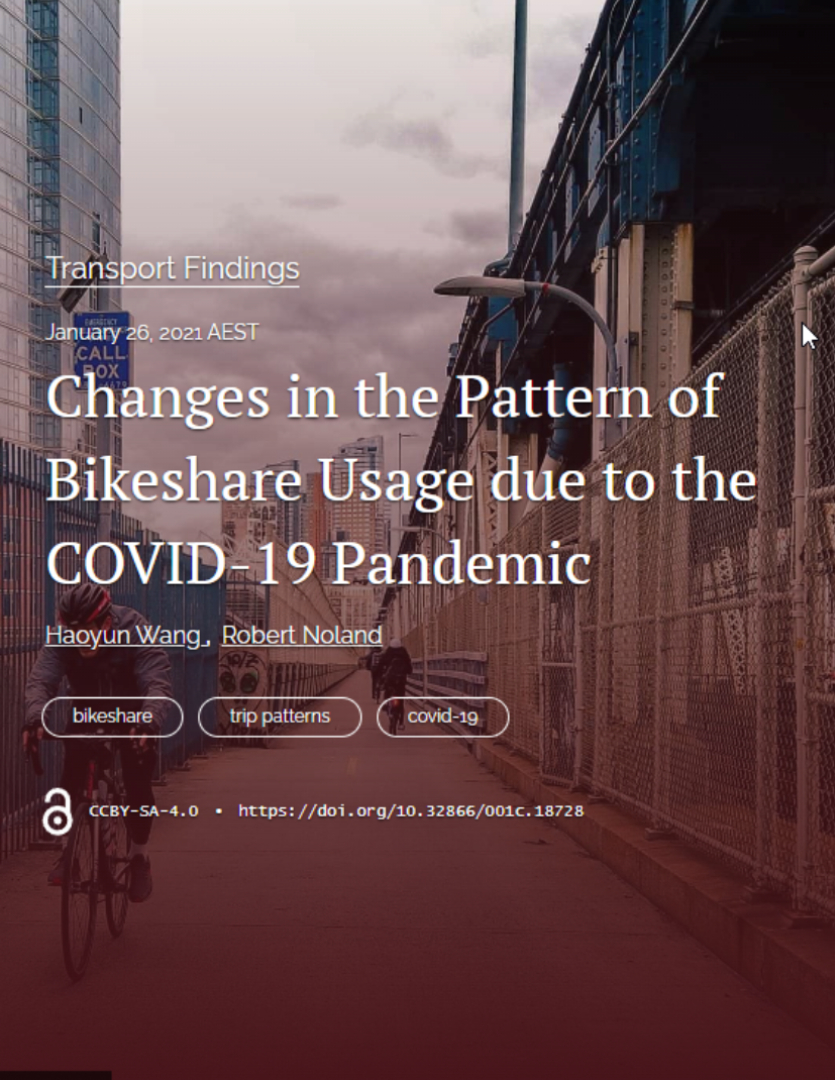Abstract
Bikeshare use in New York City dropped substantially during the initial months of the COVID-19 pandemic, but by summer of 2020 had largely recovered to pre-pandemic levels. The patterns of usage, however, have changed.
In “Changes in the Pattern of Bikeshare Usage Due to the COVID-19 Pandemic,” published in the January 2021 issue of Transport Findings, research associate Haoyun Wang MCRP ’20, MPI ’20 and Robert Noland, Distinguished Professor and director of the Alan M. Voorhees Transportation Center, examined bikeshare usage in New York City during the COVID-19 outbreak.
The authors compared bikeshare trip patterns in September 2020 to September 2019, restricting the analysis to the Borough of Brooklyn in New York City. They focus on user types, time of day, and changes in the origin and destination of trips, based on aggregated land uses surrounding docking stations.
Analyzing trip data downloaded for the Citi Bike system in New York City and land use and geographic data from the NYC Department of City Planning shows that bikeshare trips in Brooklyn dropped by 75% in late March when New York issued a stay-at-home order. Ridership gradually increased from late April to September, eventually surpassing ridership in the pre-COVID period in 2019. The results also suggest a shift toward longer trips and more recreational trips with fewer work-related trips.
